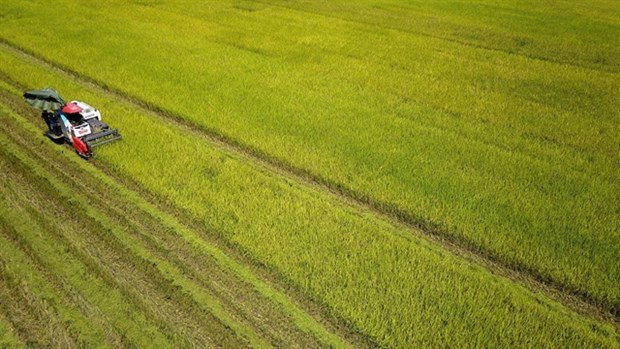Vietnam’s agriculture has maintained a 2.83 per cent annual growth rate on average, accounting for as much as 12 per cent of the entire world’s rice export.
Vietnam has decided to double the amount of foreign investment in agriculture to $34 billion by the end of 2030. From 2010-20, Vietnam’s agriculture has maintained a 2.83 per cent annual growth rate on average, accounting for as much as 12 per cent of the entire world’s rice export.
According to the local media, Tạ Thu Trang from the Institute for Policy and Strategy under the Ministry of Agriculture and Rural Development (MARD) said Vietnam’s agriculture sector had made significant progress in recent decades.
Foreign investors have played an important role in the country’s success to modernise its agriculture sector by introducing advanced technologies and creating thousands of jobs. However, there was still a lot of untapped potential in the sector.
During 2009-21, foreign investors only registered under 2,000 projects, just 5.7 per cent of all projects in Vietnam with $17.64 billion worth of investment, or 4.3 per cent of total investment.
The vast majority of the projects were from Asian countries, which mostly went to the area surrounding the capital city of Hanoi and the Mekong Delta relatively developed infrastructure already in place.
In addition, there have been incidents in which foreign projects deliberately took advantage of the numerous free trade agreements signed by Vietnam to fabricate made-in-Vietnam products without investing in production within the country.
In order to bring foreign investment in Vietnam’s agriculture sector to $34 billion by the end of 2030, there was an urgent need to increase collaboration with large corporations across all industries in the sectors, especially in technology transfer.
However, it’s important to focus on bolstering the domestic supply chains for key input, which Vietnam traditionally has been overly reliant on import, such as seeds, livestock feed, fertiliser, vaccine, medicine, pesticides, management software, slaughter lines and processing technology.
In an earlier development, MARD put forward a proposal for a number of policy changes to planning larger production centres that employed state-of-the-art equipment, to filter investors to select the most suitable technology and a mechanism to purchase raw material from farmers on a large scale directly.

